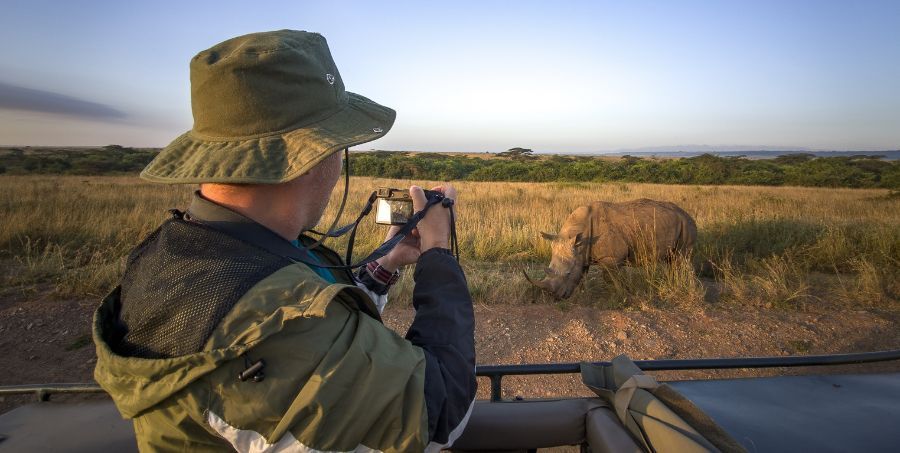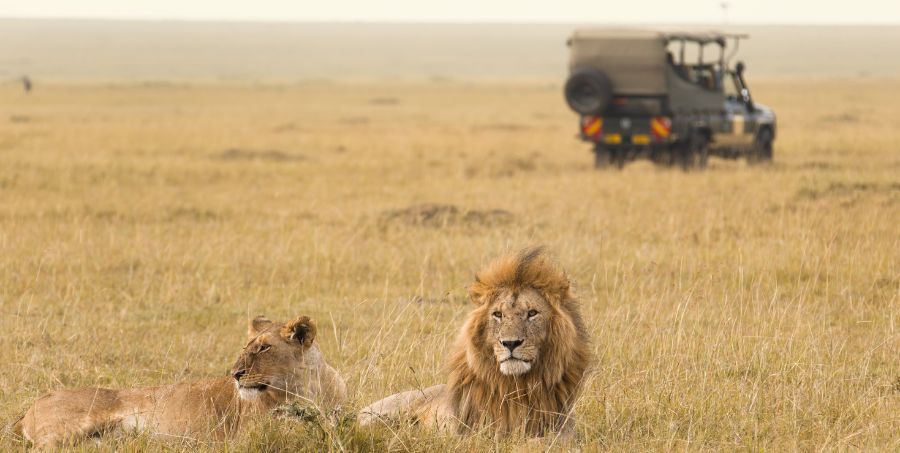Our Long-haul Product Specialist Leah loves going on safaris and after experiencing them in various destinations, she’s picked up a few essential tips worth sharing.
"Going on safari is, without question, one of the most awe-inspiring ways to see wildlife in their natural environment. There’s truly nothing like it. I’ve been fortunate enough to experience safaris across several countries, and each one has been unique, thrilling, and deeply humbling. To help you get the most out of your safari, I’ve pulled together some of my go-to tips — from packing smart to making the most of every moment. A bit of preparation really does make all the difference.
Research your safari destination

There are incredible places across the world to go on safari, each offering its own unique charm and wildlife. Here are a few of my personal favourites:
Kariega Game Reserve
Kariega Game Reserve, located on South Africa’s Eastern Cape, is a family-run, malaria-free reserve that offers a rich diversity of habitats and you can experience it as part of our Cape Town, the Garden Route & Safari tour. The reserve is home to the Big Five: lion, leopard, rhino, elephant and buffalo, and offers a variety of safari experiences, including traditional game drives, boat trips along the Kariega River and even guided bush walks. For a deeper connection to the region, you can also join the optional Kariega Foundation Community Tour, an immersive experience that offers meaningful insight into rural township life and Xhosa culture.
Yala National Park
Yala National Park is famous for having one of the world’s highest concentrations of leopards. You can visit it Discover Sri Lanka – Scenic Train, Sigiriya & Yala Safari tour. Yala is one of Sri Lanka’s most celebrated national parks, known not only for leopards but also for its vibrant mix of wildlife, including elephants, sloth bears, crocodiles, and over 200 species of birds.
Ranthambore National Park
Located in India, Ranthambore was once the hunting grounds of royalty. Today, it’s one of the country’s top national parks for spotting wild Bengal tigers, of our India’s Golden Triangle – Taj Mahal & Ranthambore Safari tour. This atmospheric park is set against a backdrop of ancient temples, crumbling forts, and thick jungle — a captivating blend of history and nature that makes it truly unique.
Etosha National Park
One of Africa’s most unique safari settings, centred around a vast salt pan that transforms during the rains — and it’s an unforgettable part of our Namibia tours. Etosha is home to an impressive variety of wildlife, including endangered black rhinos, large herds of elephants, lions, and hundreds of bird species. Another highlight of Etosha National Park is the chance to witness dramatic wildlife interactions around natural and seasonal waterholes during the dry months.
What to take on your safari excursion

Preparing the right kit can make a huge difference to your comfort and enjoyment on safari, here’s what I recommend packing:
Suitable clothes for safari:
- Stick to neutral earthy tones such as khaki, olive, brown and beige, as they are best for blending into the natural surroundings and staying cool.
- Avoid bright colours, as well as black and navy blue, they can attract biting insects.
- Avoid white clothing, it’s bright, resembles prey colouring for some animals, and doesn’t hide dust well.
- Choose breathable fabrics for comfort in the heat, but remember that layering is key.
- Many travellers underestimate just how cold early mornings can be, especially during game drives in places like Kariega and Etosha. Be sure to pack a warm hat, scarf, gloves, and a fleece or thermal jacket. You’ll warm up later in the day — so wear light layers underneath that you can remove as the sun climbs. It’s something we regularly hear feedback about, and good preparation can really enhance your comfort.
- Bring lightweight waterproofs in case of rain. Showers can occur unexpectedly, and having a packable waterproof jacket or poncho will help keep you dry and comfortable without adding much bulk.
Best footwear for safari:
- A sturdy pair of closed walking shoes or trainers are essential, especially for walking safaris.
- For Namibia, if you're planning to explore the red dunes, I strongly suggest bringing a spare pair of old sneakers or closed shoes — camel thorns are notorious for puncturing through light soles, and the fine red sand can get everywhere. Avoid using expensive hiking boots in the dunes — they’ll fill with sand that’s extremely hard to remove. If you’d like, bring your boots for later, or opt for semi-covered hiking sandals as a more breathable alternative.
- A pair of casual sandals is also handy around the lodge or camp in warmer areas.
Top safari accessories:
- Wide-brimmed hat or safari hat, sunglasses, sunscreen (SPF 30 or higher) - essential for sun protection throughout the day.
- Insect repellent, bring a couple of different types, but go easy on the application. Some heavily scented repellents can actually attract insects. A light application (especially on your pulse points), combined with long sleeves and trousers, is often more effective.
- A good pair of binoculars and a camera with zoom capabilities will greatly enhance your wildlife encounters. Mobile phones now have impressive zoom features, so don’t be afraid to use yours — they’re also excellent for capturing video!
- Eye drops can be a good idea too for dusty days, and from eye watering moments of watching out for any movement on the horizon, it could be that elusive leopard that camouflages into the background!
- Pack snacks - if you are like me and get a little 'hangry' before lunch and dinner, pack a few snacks for the road. Some days can be long drives, and it keeps you going before your next meal.
Health and safety precautions
- Vaccinations & medications: Consult your GP or a travel clinic for up-to-date information on recommended vaccinations.
- Stay hydrated: Carry a reusable water bottle and drink plenty of fluids, particularly in dry, hot areas like Etosha.
- Insurance: Comprehensive travel insurance is a must, including cover for safari activities.
- First Aid: While most lodges are well equipped, it’s sensible to carry a small personal kit with basics—plasters, antiseptic, antihistamines, pain relief, rehydration tablets (I never leave home without them), and any personal medications. Remember to carry these when travelling in your carry on.
Know the safari rules and etiquette

- Respect wildlife: Always maintain a respectful distance. Don’t attempt to touch, call to, or feed any animals.
- Follow your guide’s instructions: Local guides are trained to ensure both your safety and the animals’ welfare. Their knowledge also enhances the entire experience.
- Keep quiet: Silence or whispers during sightings maximise your chances of observing natural behaviour and maintaining a peaceful atmosphere for everyone.
- Don’t litter: Take all rubbish and food with you and leave the environment as pristine as you found it.
- Photograph responsibly: Turn off flash and avoid sudden movements. Ethical photography keeps animals calm and undisturbed.
Whether it’s your first safari or your fifth, there’s always something new to discover and each safari is a unique opportunity. On select long-haul holidays, you can enjoy unforgettable wildlife encounters while exploring a destination’s top sights — all in the company of like-minded travellers and expert guides.









